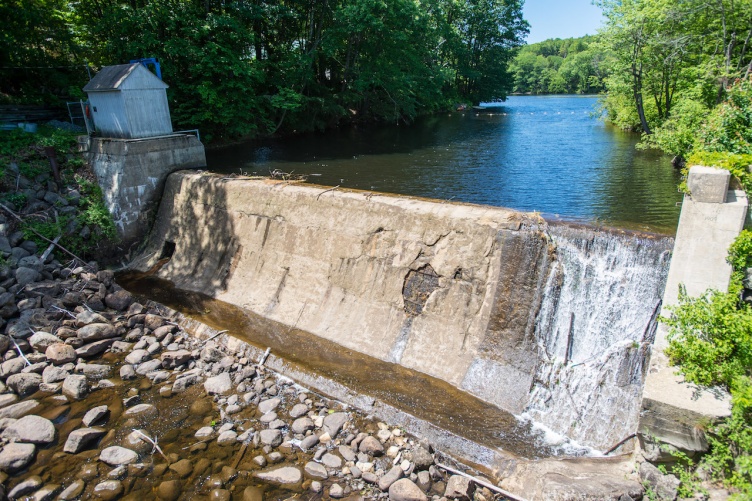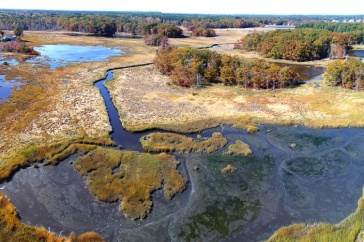
The Steels Pond dam in Antrim, N.H., provides hydropower, including some to UNH.
New England’s rivers and streams host more than 14,000 dams, many of them centuries old and built for purposes that no longer apply, such as powering long-closed mills. These aging dams — which may require upgrades and maintenance to avoid becoming public safety risks — present a policy dilemma as communities weigh the costs of maintaining or removing their dams. New research from UNH’s Carsey School of Public Policy and New Hampshire EPSCoR can help communities navigate the complexity of these dam decisions.
The research found that a majority of respondents in three Granite State polls favor removing dams except when they’re being used for hydropower generation. When the alternative is to keep dams to maintain waterfront property values, preserve industrial history or maintain lake- and pond-based recreation, most New Hampshire residents polled favor removing the dams to create free-flowing rivers that benefit fish and wildlife.
“These survey results can inform decisions about how to best steward public resources and funding for maintaining or removing dams.”
“These survey results can inform decisions about how to best steward public resources and funding for maintaining or removing dams,” says Natallia Leuchanka, a doctoral candidate in the natural resources and Earth systems science Ph.D. program and lead author of the brief.
Many of New Hampshire’s approximately 4,800 dams are reaching the end of their lifespan and require expensive maintenance or removal in order to meet safety standards; 37 were removed between 1990 and 2017. The state’s dams are in such poor condition that the American Society of Civil Engineers (ASCE) assigned them a letter grade of C–, meaning “mediocre” and requiring attention, on its 2017 infrastructure report card.
As dams age, their potential removal has become a hot-button issue in many New Hampshire communities, with vocal opposition by specific interest groups who may have a direct stake around how the dam is currently managed. These results, the researchers say, help “level the playing field” by providing preferences from a demographically representative sample of the state’s population.
“We see a need for thoughtful, active information campaigns and public education focused on the benefits and tradeoffs of various dam management options, including doing nothing,” says co-author Kevin Gardner, professor of civil and environmental engineering, Carsey senior faculty fellow and principal investigator on the National Science Foundation-funded Future of Dams project of NH EPSCoR.
The researchers also found that respondents who self-identified as either Democrats or independents were more likely to prefer removal than Republicans, and that younger respondents and women were more likely to prefer removal; those findings have implications for efforts to better inform people about these issues.
The survey research was led by Leuchanka. Coauthors are Gardner; Catherine Ashcraft, assistant professor of natural resources and the environment and a Carsey faculty fellow; and Lawrence Hamilton, professor of sociology and a Carsey senior fellow.
Funding for this project is provided by the National Science Foundation’s Research Infrastructure Improvement Program NSF #IIA-1539071.
-
Written By:
Beth Potier | UNH Marketing | beth.potier@unh.edu | 2-1566 -
Written By:
Erika Mantz | Communications and Public Affairs | erika.mantz@unh.edu

















































